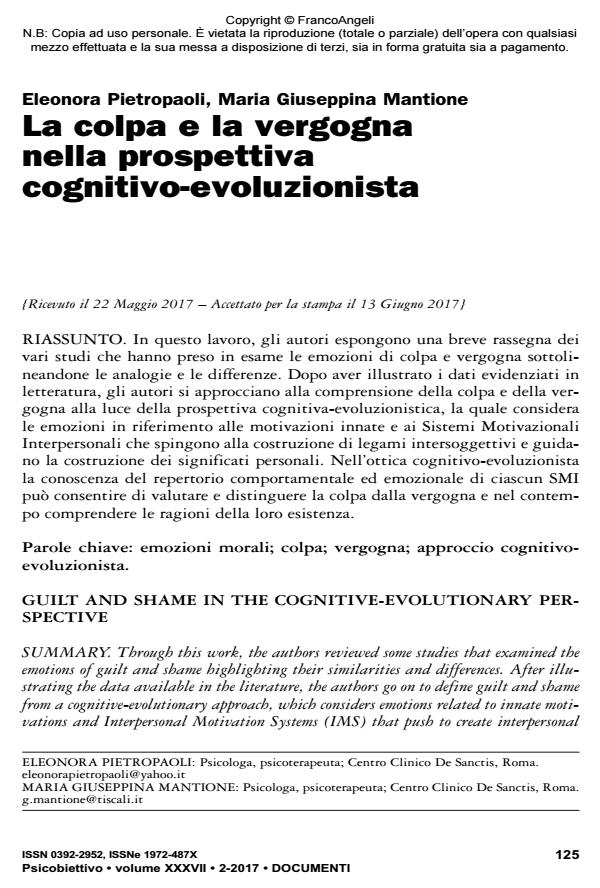Guilt and shame in the cognitive-evolutionary perspective
Journal title PSICOBIETTIVO
Author/s Eleonora Pietropaoli, Maria Giuseppina Mantione
Publishing Year 2017 Issue 2017/2
Language Italian Pages 18 P. 125-142 File size 120 KB
DOI 10.3280/PSOB2017-002010
DOI is like a bar code for intellectual property: to have more infomation
click here
Below, you can see the article first page
If you want to buy this article in PDF format, you can do it, following the instructions to buy download credits

FrancoAngeli is member of Publishers International Linking Association, Inc (PILA), a not-for-profit association which run the CrossRef service enabling links to and from online scholarly content.
Through this work, the authors reviewed some studies that examined the emotions of guilt and shame highlighting their similarities and differences. After illustrating the data available in the literature, the authors go on to define guilt and shame from a cognitive-evolutionary approach, which considers emotions related to innate motivations and Interpersonal Motivation Systems (IMS) that push to create interpersonal bonding and determine how the individual interprets events. In the cognitive-evolutionary view, the knowledge of the behavioral and emotional reportorial of each IMS allows evaluating and distinguishing guilt from shame and at the same time understands the reason for their existence.
Keywords: Moral Emotions; Guilt; Shame; Cognitive-Evolutionary Approach.
Eleonora Pietropaoli, Maria Giuseppina Mantione, La colpa e la vergogna nella prospettiva cognitivo-evoluzionista in "PSICOBIETTIVO" 2/2017, pp 125-142, DOI: 10.3280/PSOB2017-002010